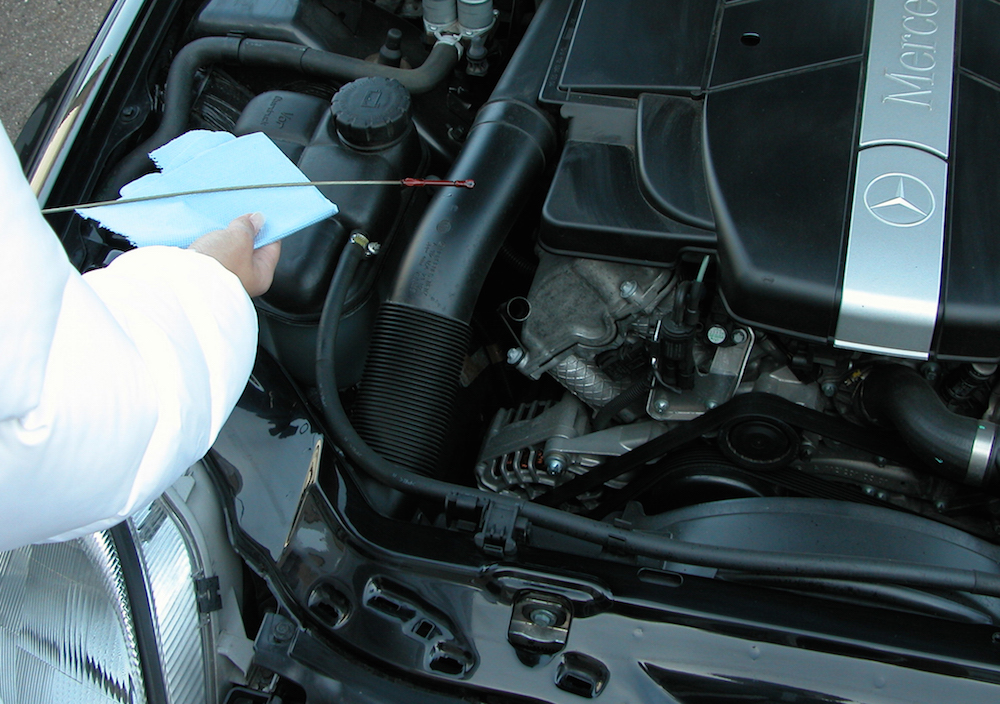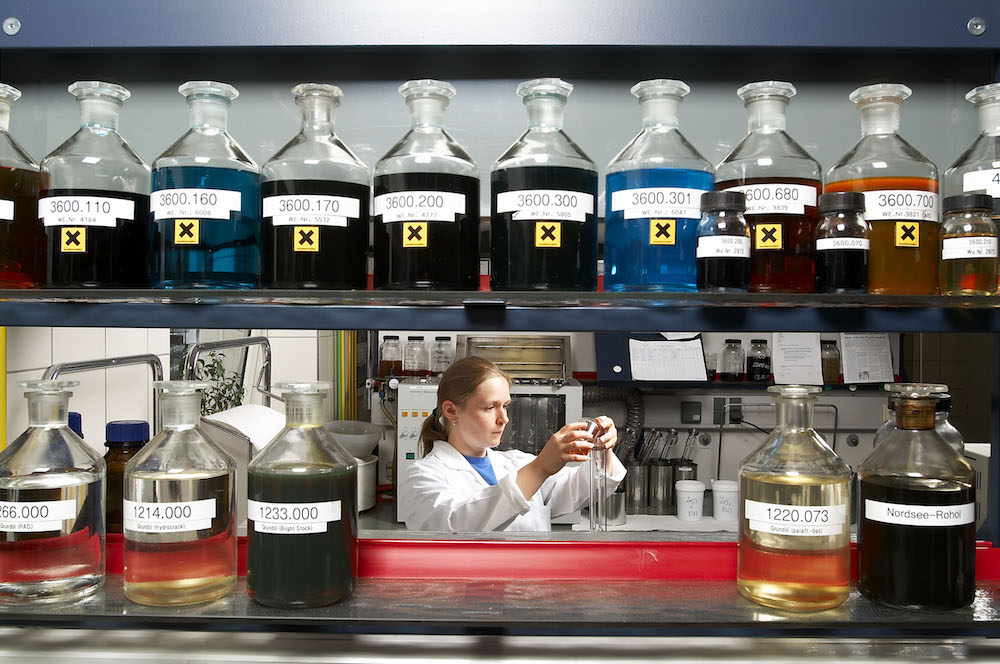Engine oil
In combustion engines, engine oil fulfils a number of purposes. One of the most important of these is to lubricate mechanical components. Lubrication reduces friction between moving parts and keeps…
Function
In combustion engines, engine oil fulfills a number of purposes. One of the most important of these is to lubricate mechanical components. Lubrication reduces friction between moving parts and keeps wear to a minimum. Engine oil also has to cool, clean, provide protection against corrosion and seal combustion chambers. Last but not least, it is used for power transmission in hydraulic engine systems (chain tensioners, camshaft adjustment, etc.).
THE COMPOSITION OF ENGINE OIL
Depending on their type and performance, modern engine oils are based on different base oils or base oil compounds. Additives are also used which perform a variety of tasks. High-Performance engine oil can only be achieved with a balanced formula (base oil and additive components).
The composition of typical engine oil is as follows:
- 78% base oil
- 10% viscosity improvement additive (to improve flow)
- 3% detergent (detergent substances which clean the engine)
- 5% dispersant (for the suspension of dirt particles)
- 1% wear protection
- 3% other components
VISCOSITY
Viscosity is one of the most important properties of engine oil. The viscosity of an oil is always marked on its barrel. Viscosity is measure of a fluid’s resistance to flow. It is determined by the internal friction which resists the flow of adjacent particles in the fluid. As long ago as 1911, viscosity provided the basis for the first engine oil classification system and was defined in the Society of Automotive Engineers (SAE) classification system. Most of the oils used today are multi-grade oils. SAE 5W30 is an example of a viscosity designation of a multi-grade oil.
Measures of viscosity are based on two variables:
DYNAMIC VISCOSITY
This describes the engine oil’s resistance to flow at low temperatures. Oils are divided into the winter viscosity classes 0W, 5W, 10W, 15W, 20W, 25W. The smaller the number in front of the W, the lower the viscosity of the oil at cold temperatures. Dynamic viscosity affects the starter speed when the engine is cold, for example. The lower the cold viscosity index, the easier the cold engine will turn over on starting.
KINEMATIC VISCOSITY
Kinematic viscosity describes the ratio between dynamic viscosity and the thickness of the engine oil at a certain temperature. SAE summer viscosity classes are classified at a test temperature of 100°C. Typical viscosity classes are 20, 30, 40, 50 and 60. The larger the number in front of the W, the higher the viscosity of the oil at 100°C.
HTHS
The viscosity classes referred to above (winter and summer) are supplemented by what is known as HTHS viscosity. HTHS stands for High-Temperature High Shear. It describes dynamic viscosity measured at 150°C and under higher shear forces. It is expressed in millipascal seconds (mPas). HTHS limit values are defined to ensure that even in bearings (where both shear forces and oil temperatures are high), engine oils can be relied upon to provide the necessary lubrication.
The limit value for engine oils with specification ACEA A2/A3 and ACEA B2/B3 is to be found at an HTHS of 3.5 mPas. Engine oil qualities in category ACEA A1/B1 have a reduced HTHS of up to 2.9 mPas. Fuel consumption should be lower as a result of the reduced HTHS index.
ENGINE OIL MIXABILITY
As a general rule, engine oils can be mixed together regardless of whether they are synthetic-based or mineral-oil-based. Mixing is even encouraged by motor companies.
However, engine oils of different brands or compositions should only be mixed if the requirement for topping up cannot be met in any other way. Accordingly, it is not recommended to mix synthetic or semi-synthetic engine oils with mineral-oil-based engine oils as this will lower the higher quality standard of synthetic oils. The quality rating is only as good as the weakest link in the chain.
Extensions to the intervals for changing lubricants mean that oils have to meet increasingly tough requirements. For example, modern engine oils have to maintain constant performance throughout their service life as well as exhibiting high thermal and oxidative stability for long service life and optimized friction characteristics to reduce energy losses.
Safety
The engine oil is responsible for ensuring that all engine components are lubricated. It safeguards the reliable running of the engine, thereby contributing to safety on the roads.
Depreciation
To safeguard the operational reliability of an engine and avoid damage caused by the engine oil, the oil level must be checked at regular intervals. If the level is too low, the oil must be topped up immediately.
 Oil is a wear part. It must be changed at the intervals prescribed by the vehicle manufacturer. If oil is not changed at the prescribed intervals, there is a risk of the mechanical components of the engine wearing more quickly. The consequences of this can be expensive repairs or even the engine being written off.
Oil is a wear part. It must be changed at the intervals prescribed by the vehicle manufacturer. If oil is not changed at the prescribed intervals, there is a risk of the mechanical components of the engine wearing more quickly. The consequences of this can be expensive repairs or even the engine being written off.
Oil meeting the quality specifications prescribed by the engine manufacturer must be used both when changing and when topping up oil. This will ensure that the engine will function reliably throughout its service life, running efficiently and emitting low levels of pollutants.
Environmental protection
Modern engine oils improve the overall efficiency of an engine, thereby helping to reduce emissions. Furthermore, modern engine oils which support ash-free combustion help to improve the functional reliability of exhaust gas re-treatment systems like diesel particulate filters. Today’s engine oils do not contain chlorine or heavy metals and can easily be recycled. This means that resources are protected.
Download Specifications:



No comment